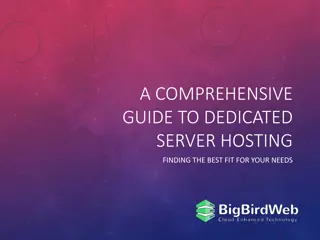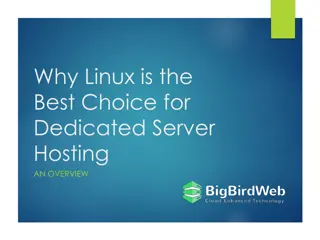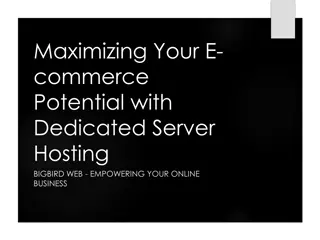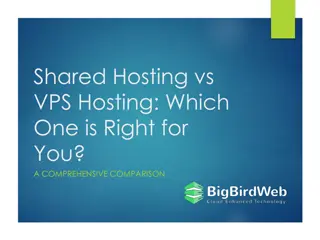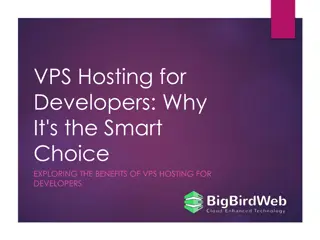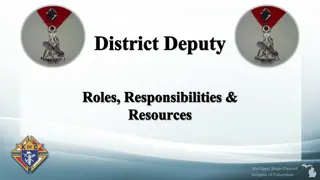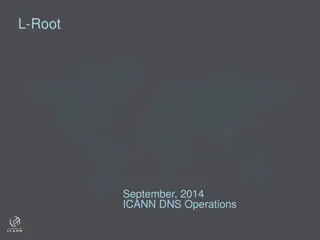Training, Hosting & Facilitating Online and Hybrid Meetings
This training focuses on defining hybrid events, exploring key elements for success, and discovering tools for hosting engaging online and hybrid meetings. Learn about the purpose, definition, and benefits of hybrid events, while gaining insights on effective hosting practices and key objectives of hosting such events.
Download Presentation

Please find below an Image/Link to download the presentation.
The content on the website is provided AS IS for your information and personal use only. It may not be sold, licensed, or shared on other websites without obtaining consent from the author.If you encounter any issues during the download, it is possible that the publisher has removed the file from their server.
You are allowed to download the files provided on this website for personal or commercial use, subject to the condition that they are used lawfully. All files are the property of their respective owners.
The content on the website is provided AS IS for your information and personal use only. It may not be sold, licensed, or shared on other websites without obtaining consent from the author.
E N D
Presentation Transcript
TRAINING: HOSTING & FACILITATING ONLINE AND HYBRID MEETINGS
PURPOSE BEHIND THIS TRAINING Define hybrid events Explore key elements of successful hybrid events Discover tools and techniques for hybrid events
DEFINING HYBRID EVENTS & THEIR PURPOSES
DEFINITION OF HYBRID EVENTS What a Hybrid Event Is What a Hybrid Event Is Not Integrated Experience: Combines in-person and virtual audiences with tailored experiences for each group. Just a Livestream: Simply streaming the in-person event without interaction for virtual attendees. Custom Content for Each Audience: Engages both groups with activities, discussions, or networking that are specific to their format (in-person or virtual). An In-Person Event with a Virtual Add-On: Adding a virtual component without customising it for online participants. Real-Time Engagement: Both in-person and virtual attendees participate together through tools like live Q&A or polls. Separate Events with No Connection: Running an in-person event and a separate virtual one without linking them Shared Branding & Sponsorships: Sponsors and exhibitors can reach both audiences, with targeted exposure for each group. Isolated Gatherings: Holding an in-person event with no integration for virtual participants, like just having a recording available later.
CONVENE & HOST: WHAT DOES THAT MEAN? Hosting means creating a space where people come together to share, learn, and discuss important topics. As hosts, our role is to create a welcoming and safe space where participants feel heard and open to meaningful conversations. Effective Hosting Practices Creating a Participatory Environment The Art of Conversation Co-Creating and Co-Hosting Encourage deep listening and collaboration to integrate diverse viewpoints, while creating a safe space for participants to speak up and act. Encourage everyone to share their ideas, ensuring the conversation is relevant to all, as diverse perspectives enrich understanding. Conversations are more valuable when everyone contributes. Listen attentively, speak purposefully, and approach conversations with curiosity and openness. Build trust and collaboration and be clear about your role to guide discussions effectively. Slowing down can enhance conversation quality and drive faster progress.
TOP 5 OF KEY PURPOSES OF HYBRID EVENTS 1. Broaden audience reach 2. Enhance engagement accross diverse channels 3. Flexibility for attendees 4. Increase event accessibility and inclusivity 5. Support sustainability goals
CHARACTERISTICS OF THE NEW LANDSCAPE
How the Event Landscape Has Evolved: Key Differences Between In-Person, Online, and Hybrid Events Interaction: In-person conversations and collaboration. Benefits: Builds personal connections and provides immediate feedback. Limitations: Limited by geography and requires physical presence. Challenges: High travel, venue, and logistics costs; difficult to engage large audiences. Interaction: Combines in-person and online participation for real-time interaction. Benefits: Expands global reach, offering flexibility for remote attendees while maintaining personal engagement. Limitations: Requires reliable technology and careful planning for smooth integration. Challenges: Balancing engagement, ensuring tech reliability, and managing coordination. Interaction: Occurs only on digital platforms (webinars, virtual meetings, etc.). Benefits: Global accessibility, cost-effective, and flexible. Limitations: Screen fatigue, lack of personal connection, and technical issues. Challenges: Maintaining engagement and limited networking opportunities.
KEY ELEMENTS OF A SUCCESSFUL HYBRID EVENT
AUDIENCE ENGAGEMENT Breakout sessions Interactive formats Real-time feedback Create opportunities for smaller group discussions. Use live polls, Q&A, and chat to encourage participation. Use feedback tools (e.g., live surveys) to assess engagement and adjust content as needed. Mix virtual and physical attendees to promote collaboration. Ensure both in-person and virtual participants can ask questions and engage with speakers. Foster a sense of connection through interactive icebreakers.
TECHNOLOGY ESSENTIALS Reliable Internet Connectivity Streaming Platforms Choose reliable platforms (e.g., Zoom, Microsoft Teams, or custom solutions) that support video streaming, chat, and breakout rooms. Ensure strong internet connection for seamless streaming. Have backup internet options in case of failure (e.g., mobile hotspots). Test the technology thoroughly before the event.
LOGISTICS AND COORDINATION Hybrid Moderator or Facilitator Venue Setup Time Zone Management For in-person events, equip the venue with AV tech, microphones, and cameras to ensure smooth streaming and visibility for virtual attendees. Consider time zones when scheduling sessions and offer on-demand access to recorded content. Assign a moderator to connect in-person and virtual attendees, ensuring smooth transitions between both groups.
COLLABORATIVE TOOLS AND TECHNIQUES
TOOLS: ZOOM Description: A popular video conferencing tool for virtual meetings, webinars, and hybrid events with interactive features for all attendees. Key Features: Breakout Rooms: Small-group discussions for mixed audiences. Screen Sharing: Share presentations, videos, and demos. Reactions & Polls: Collect feedback and boost engagement. Whiteboard: Enable visual collaboration.
TOOLS: MICROSOFT TEAMS Description: A collaboration tool integrated with Microsoft 365, ideal for virtual/hybrid meetings and document sharing. Key Features: Breakout Rooms: Facilitate small group discussions. File Sharing & Co-Editing: Collaborate on documents in real time. Polls & Q&A: Engage attendees and gather feedback. Together Mode: Simulate a shared virtual space for attendees.
TOOLS: MIRO Description: A collaborative tool for real-time brainstorming and idea visualization, ideal for virtual and in-person collaboration. Key Features: Templates: Pre-designed formats for brainstorming and planning. Sticky Notes & Drawing Tools: Facilitate interactive idea sharing. Real-Time Collaboration: Instant editing and updates for all participants.
TOOLS: SLIDO Description: An interactive platform for Q&A, live polls, and feedback, seamlessly integrating with Zoom, Microsoft Teams, and Webex. Key Features: Live Polls & Surveys: Real-time attendee engagement. Q&A: Participants can submit and upvote questions. Quizzes: Add a gamified element to sessions.
TOOLS: B2MATCH Description: An event management platform for networking, matchmaking, and hybrid events, designed to connect participants effectively. Key Features: Matchmaking: AI-powered tools to connect attendees based on their interests and profiles. Custom Agendas: Personalised schedules for participants. Virtual Networking: Tools for 1:1 video meetings and online interaction. Event Analytics: Insights on participant engagement and event performance
BEST PRACTICES FOR USING INTERACTIVE FEATURES Live Polls Q&A Sessions Chat Breakout Rooms Use periodic polls to gather feedback and keep the audience engaged. Use tools like Slido or Zoom Q&A for live question submissions and upvoting to prioritize key topics. Use chat tools for quick feedback and questions, with a moderator highlighting key points. Use breakout rooms for focused group discussions, mixing in-person and virtual attendees to boost engagement.
FINAL QUESTIONS, KEY TAKEAWAYS, AND RESOURCES FOR FURTHER EXPLORATION
WRAP-UP AND SUMMARY OF KEY TAKEWAYS Core components for success Understanding Hybrid Events Engagement tools Interactive features
RESOURCES FOR FURTHER EXPLORATION Recording of the Session PPT Presentation Best Practices Guide Access the full slide deck from today s session to revisit key points and recommendations. A handout summarising essential practices for planning and executing successful hybrid events. A video recording of the entire meeting for future reference or to share with colleagues.








